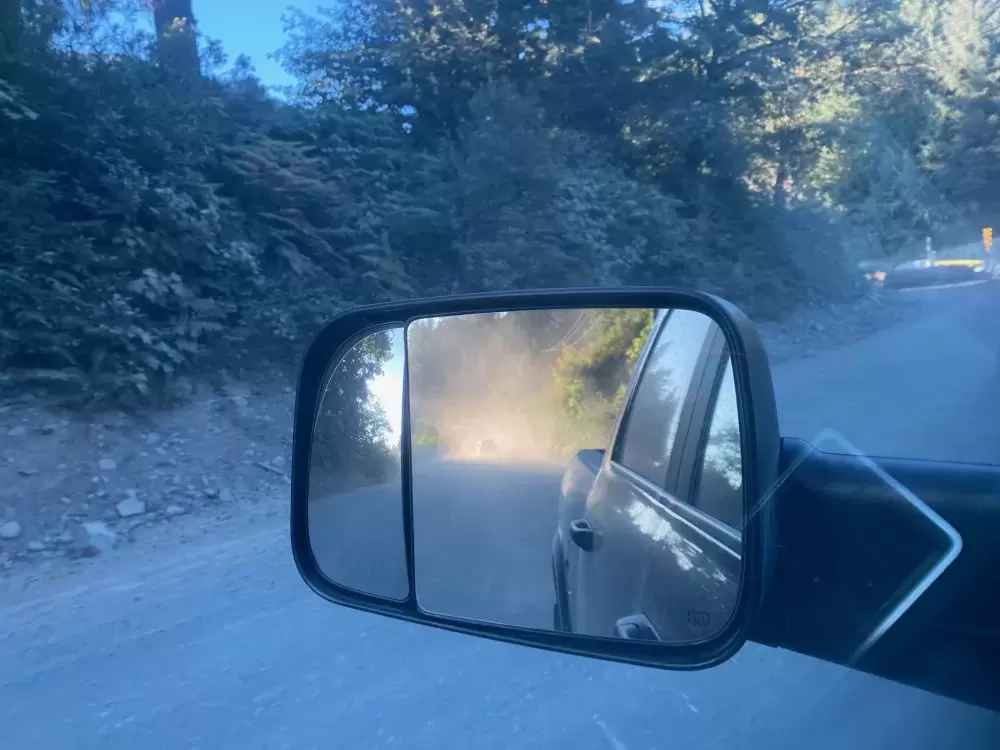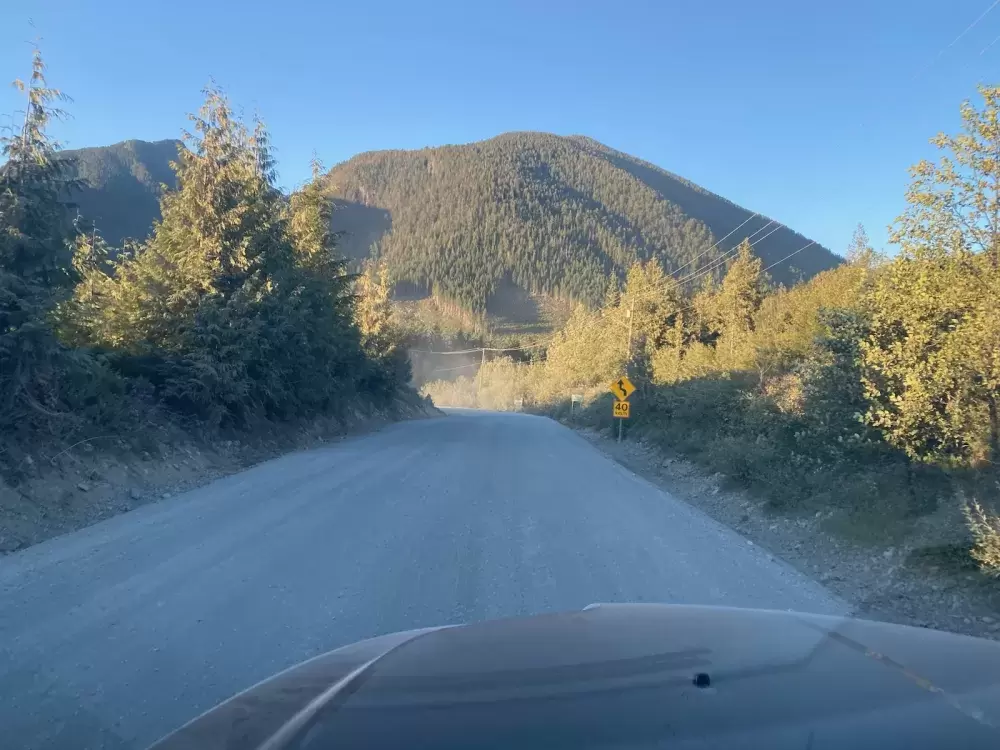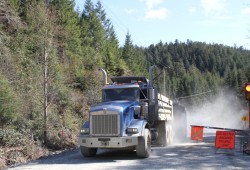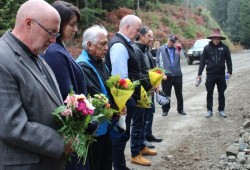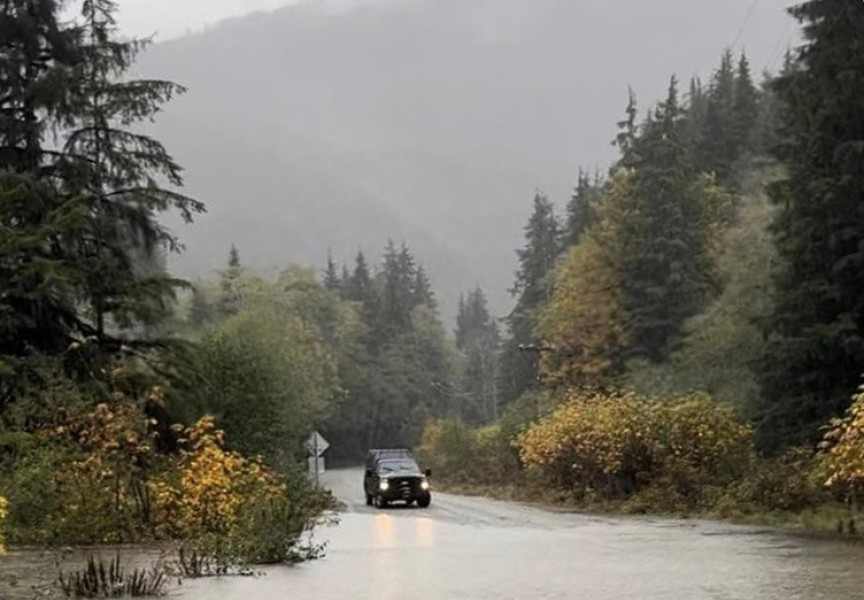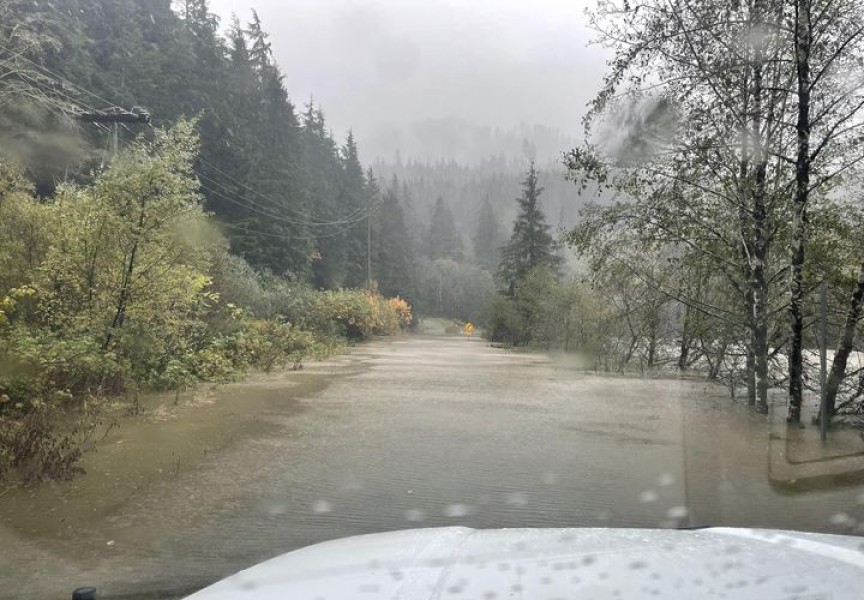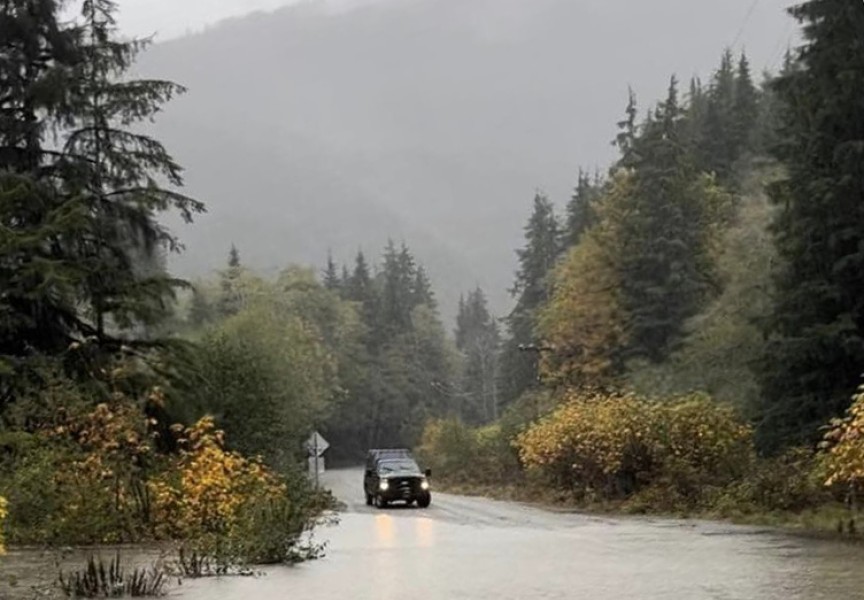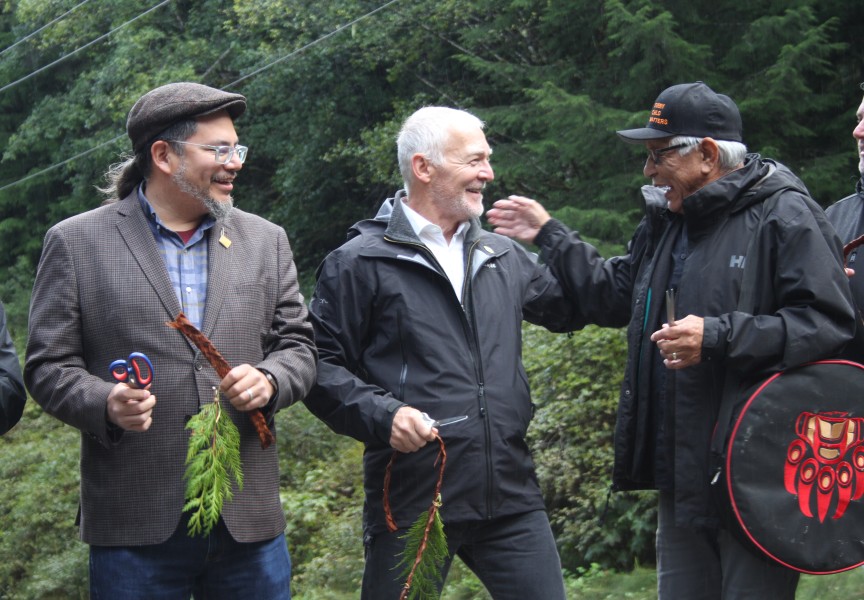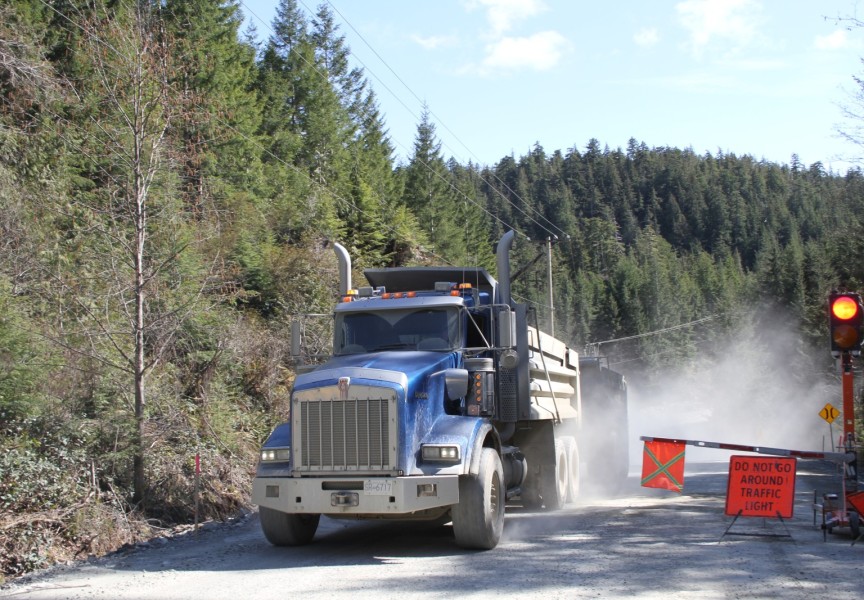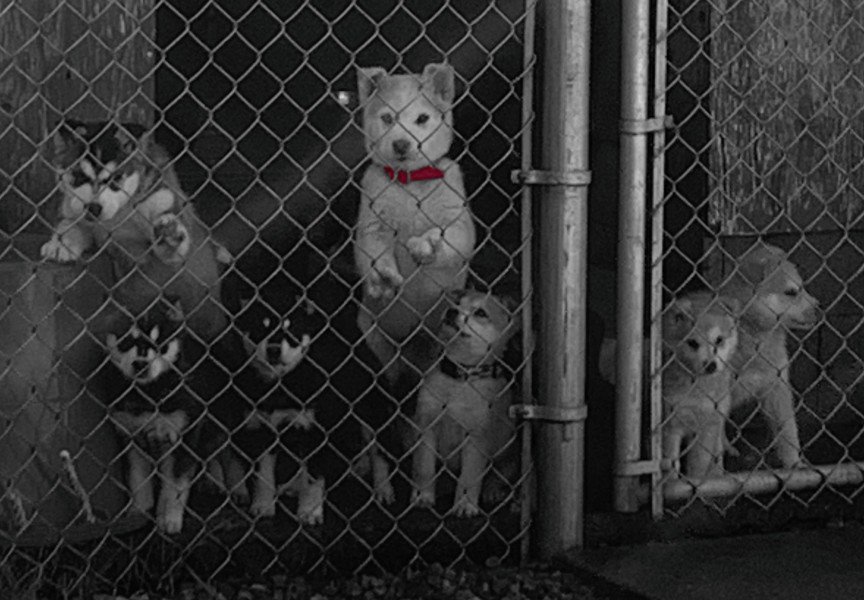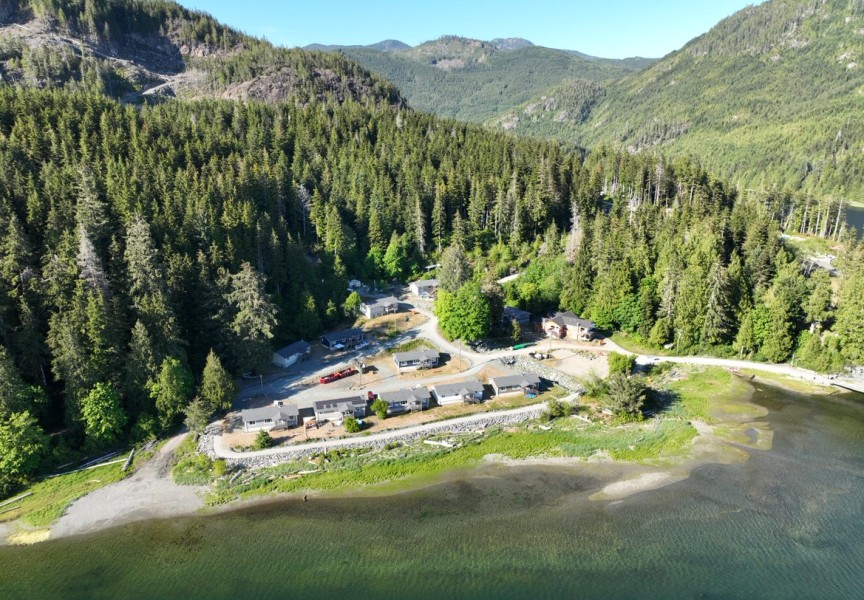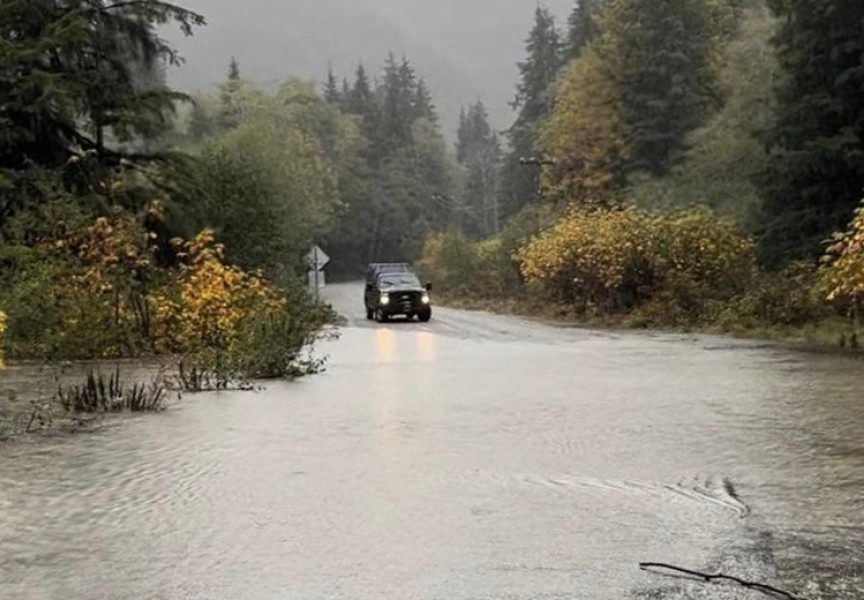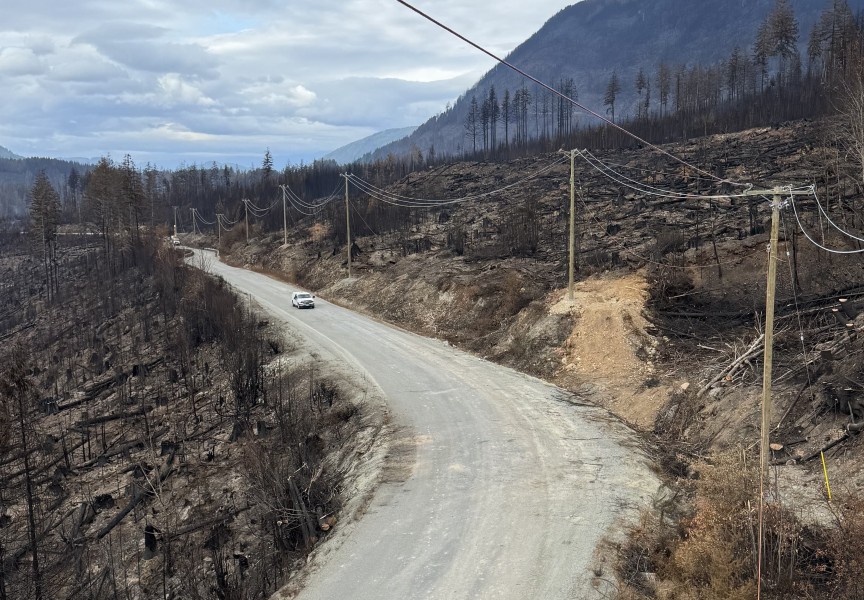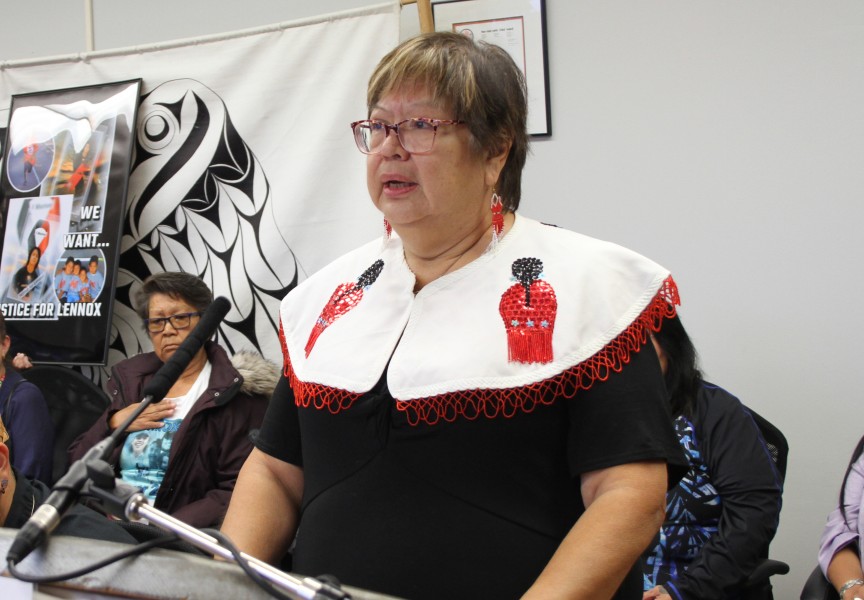After decades of lobbying for a safer road to Bamfield and the Huu-ay-aht village of Anacla, chip sealing begins on the route this weekend.
Announced by the Huu-ay-aht First Nations today, crews will begin laying the seal coat Saturday, starting halfway down the 77-kilometre passage to progress towards Bamfield. After sealing kilometre 36 to 76.6, work is expected to begin back at the midway point, progressing the seal coat towards Port Alberni from kilometre 36 to 0. The seal coat is set to be completed by the early fall.
“During construction, detours, delays and alternating single-lane traffic with pilot vehicles will be in place,” stated the First Nation is a press release, recommending that travellers watch for notices about delays to the road on the Huu-ay-aht and Western Forest Products websites.
Physical work on improving the road began in October 2021, with the movement of gravel to build up the road for a smoother drive, widening it in many sections to eight metres. Now the chip sealing will add an inch-and-a-half layer to the augmented surface, composed of liquid asphalt sprayed over the road, followed by a layer of rock chip. After being rolled, another layer of asphalt will be sprayed on to complete the sealing.
This chip-sealed surface is designed to be more flexible than pavement, which can crack more easily, according to Parsons, the company contracted to do the road work.
Stretching 77 kilometres south of Port Alberni to the Barkley Sound communities of Bamfield and Anacla, the road has long been considered a hazardous route, prone to washouts and potholes in the rainy winter months, while generating blinding dust in the dry summer. Now with its investments in the Bamfield area over recent years, the Huu-ay-aht are looking to diversify their economy through more tourism, lessoning the First Nation’s reliance on forestry, which currently accounts for most of its annual business revenue.
“The road improvements will provide safety for Huu-ay-aht citizens, the Bamfield community and visitors, and that is one of our main priorities,” said Huu-ay-aht Executive Councillor Wiiheyakchikk, Brad Johnson, in a media release. “With the economic benefits this will bring to the region, we look forward to building a sustainable economy for our nation.”
Chief Councillor John Jack expects that travel time on the road will become more predictable from the chip sealing, while the current 60-kilometre speed limit could remain in place.
“Because we will see much less in the way of dust, and we won’t have much in the way of potholes or wash-boarding, that should mean that people are generally sticking to the 60-kilometre speed limit,” said Jack, adding that a final decision on the speed limit will come after the chip sealing is completed. ”I would expect the average trip over the whole year to go down, but I wouldn’t say it go down by 50 per cent or anything.”
At least nine Huu-ay-aht members have died on the road since it opened in the early 1970s, including the late Tayii Ḥaw̓ił Art Peters. The most recent tragedy occurred on Oct. 24, 2021, when a vehicle left the road to hit a tree shortly before 1:30 a.m., claiming the life of Huu-ay-aht member Tim Manson. The RCMP stated that alcohol was not a factor in the crash, although road conditions, poor weather and limited communication ability in the remote section of the route challenged first responders to come to the scene.
Initially intended as a forestry road, lobbying to improve Bamfield Main has dated back to its early use in the 1970s. After decades of hesitancy from the province, the narrative changed on Friday, Sept. 13, 2019, when a bus carrying 45 students and two teaching assistants from the University of Victoria slid off the road during an annual trip to the Bamfield Marine Sciences Centre. The vehicle rolled down an embankment, resulting in the deaths of Emma McIntosh Machado and John Geerdes, who were both 18-year-old university students.
The following November former premier John Horgan visited the crash site and Anacla, where he committed to improving the road. By September 2020 a commitment of $25.7 million was announced by the province, following Huu-ay-aht’s investment of $5 million.
Since then the project’s cost has increased, an additional amount that has been shouldered by the First Nation, said Jack.
“There has been additional costs due to inflation, so that was pretty significant,” he said. “We made sure that we took the necessary steps to ensure that we complete the project.”
Now the initiative is being called the “Bamfield Road Reconciliation Project” as it heads into its final phase.
“This project will ensure Bamfield Main is a safe route for everyone,” stated Murray Rankin, B.C.’s minister of Indigenous Relations and Reconciliation. “This is a vital roadway on the west coast of Vancouver Island, connecting residents of several coastal communities. I commend Huu-ay-aht First Nations for their steadfast commitment and continued progress on such a large-scale project.”
Before physical work on the road began a full paving to approximately 15 kilometres of steeper sections was planned. This is still being considered by Huu-ay-aht’s new elected council, said Jack, although the priority now is to complete the chip sealing.
“That was the original plan before inflation took hold and made things that much more expensive,” he said, noting that paving certain sections will be part of a longer-term approach to improving the road. “Not only will the road be chip sealed, we’re looking at the constant improvement of the road over time with pavement, especially in areas that will need it from a safety and maintenance perspective.”
Looking into the future, the First Nation expects that more of its citizens will move to their home territory, as access to Anacla and Bamfield improve with the chip-sealed road.
“It think there will be an increased demand on development as well as the properties that are already available in the Bamfield and Anacla area, so as a result I think that we will see an overall increase in the population of those two combined areas,” said Jack. “It is one of our strategic priorities to ensure that we make space, housing and jobs available for our own Huu-ay-aht citizens to move back to the homelands. Currently only 20 per cent of our people live on the homelands, so we want to reverse that course over the next generation or so.”

